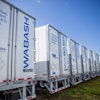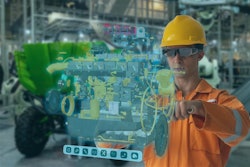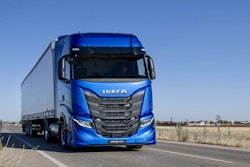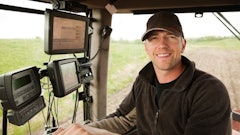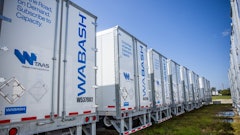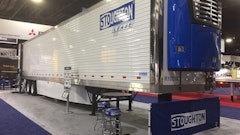
Prior to the Coronavirus disease (COVID-19) pandemic, the global supply chain was susceptible to fluctuations due to weather, geo-political situations and labor, to name a few. As the outbreak swept the globe -- halting operations yet demanding resiliency -- these weaknesses were exacerbated. Consumers and businesses alike experienced the impact of a taxed supply chain, which begged the question -- how do we fix it? Armed with new information and innovative technologies, many large enterprises are facing the challenge head-on, and digitization and automation are at the forefront.
Supply chain leaders are now laser-focused on specific areas of the supply chain. Automation in the warehouse has gained clear momentum and steady progress is being made with autonomous over-the-road (OTR) trucking. However, prior to the outbreak, OTR semi-trucks spent roughly 12 million days waiting in distribution yards, and that number has increased as companies have dealt with COVID-19 protocols. Historically under-invested and the connection point between warehouses and OTR trucking, distribution yards are the ideal next place for autonomous systems. It’s crucial to delve into the main areas of fluctuation that contribute to a taxed supply chain in the first place.
Supply chain fluctuations
The pandemic has accentuated challenges in the supply chain in three key areas that impact the flow of goods -- demand, labor and energy.
Demand fluctuations are a reality for supply chain leaders. Nearly 80% of distribution center operations are still performed manually, and whether it’s seasonal or unforeseen, there are peaks and valleys when it comes to consumer needs. Manual work, manual processes and siloed, fragmented data put supply chain managers at a disadvantage. Lacking visibility into where goods are along the supply chain makes it nearly impossible to predict and prepare for sharp shifts.
With regards to labor, it was very difficult to keep distribution yard positions filled prior to the pandemic, with a 30% turnover rate. This was largely due to the dirty, dull and dangerous nature of the job. Additionally, growth within e-commerce is outpacing the labor pool by a rate of six to one. When these factors coalesce, distribution yard managers must mitigate risks within the labor market.
Lastly, the supply chain is at the mercy of the price of fossil fuels to move freight. Distribution yard trucks in North America alone require about 1.2 million gallons of diesel fuel per year, leaving distribution yards (and the entire supply chain) reliant on this ever-fluctuating market. Whether it’s geopolitical issues or OPEC (Organization of the Petroleum Exporting Countries) regulations, the global energy market is under constant fluctuation.
The time is ripe to shift toward a more dependable and predictable way to move goods around the world. Supply chain managers realize if they can address these issues, it leads to more efficient, safer, sustainable, and ultimately, more resilient operations.
Automation
Managing demand fluctuations have long been a top challenge for supply chain leaders. Electric, automated yard trucks offer expanded capacity -- enabling increased efficiency in times of demand spikes. By getting even slightly more efficient, say by 5-10 minutes, trucks could spend 10-20% less time sitting in distribution yards. And, when demand returns to normal or there’s a sharp contraction, yard truck operating time can be easily adjusted, thereby rebalancing the distribution network.
In terms of labor, many distribution yard workers were under stay-at-home orders or out sick, further amplifying the need for automation to keep businesses operating. When COVID-19 cases spiked, it was evident that there is a dire need for outside assistance in order to keep individuals out of harm’s way -- whether this be heavy machinery or a highly contagious virus. Automated distribution yard trucks not only make these areas a safer place to work but give workers the flexibility needed in times of crisis -- no matter what that may be.
Finally, in regard to energy, present-day yard trucks unnecessarily contribute 3.8 million metric tons of carbon dioxide to the atmosphere annually -- equivalent to one coal-fired power plant. Zero-emission electric yard trucks give supply chain leaders the ability to completely avoid the aforementioned obstacles that come with the inevitable fluctuations in the fossil fuel energy market as well as the opportunity to accelerate their carbon sustainability objectives. Furthermore, the business benefits of autonomy far outweigh the cost of migrating diesel trucks to electric trucks over time.
As we emerge from the COVID-19 pandemic, warehouse and distribution yard automation will increasingly play pivotal roles in governing the velocity of the movement of goods. The result of these new technologies will lead to a more resilient, sustainable, smarter supply chain -- better able to manage fluctuations -- major or minor, predictable or unforeseen.




